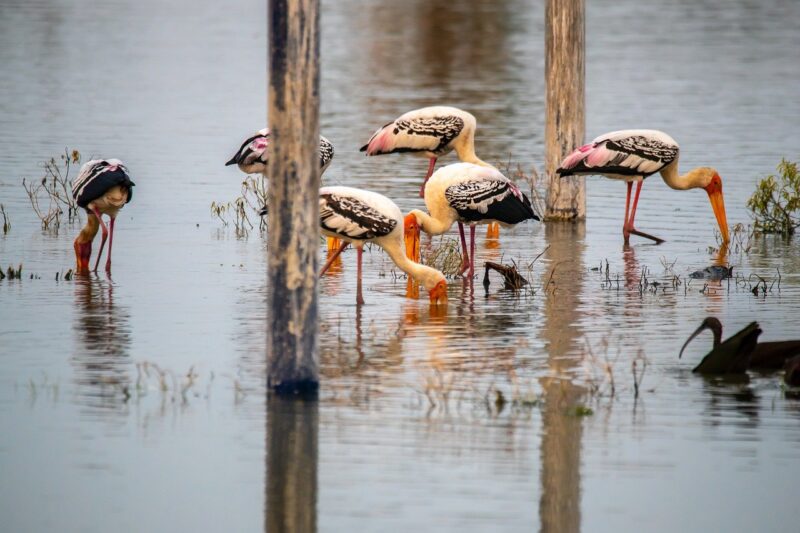Why Certain Zoos Are Transforming into Wildlife Sanctuaries
November 12, 2024

In recent years, a growing number of zoos around the world have begun the significant transition from traditional zoo models to wildlife sanctuaries. This shift reflects a broader understanding of animal welfare and conservation practices, prioritizing the needs and rights of wildlife over entertainment. Let’s dive deeper into this important transformation and explore the reasons behind it.
The Evolution of Zoos: From Exhibitions to Conservation Centers
Historically, zoos were primarily places where animals were displayed for public entertainment. Animals were kept in cages, often in small enclosures that failed to simulate their natural habitats, leading to stress and behavioral issues. However, societal views on animal treatment have shifted, leading to a reevaluation of the purpose and practices in zoos.
Today, many zoos are focusing on conservation, education, and rehabilitation. This evolution has resulted in an increasing number of zoos seeking certifications and partnerships with organizations that emphasize sustainable practices and animal-friendly policies. With a strong push towards ethical standards, zoos are recognizing the importance of transforming into wildlife sanctuaries or partnering with existing sanctuaries to rescue and rehabilitate animals.
What is a Wildlife Sanctuary?
A wildlife sanctuary is a protected area where animals are cared for in a natural habitat setting. Unlike traditional zoos, sanctuaries prioritize animal welfare over entertainment. Animals are provided with large, spacious environments that closely resemble their natural habitats, where they can exhibit natural behaviors. Sanctuaries often focus on rehabilitation for injured, orphaned, or abused animals, giving them a second chance at life.
Key characteristics of wildlife sanctuaries include:
- No breeding for captivity: Sanctuaries do not breed animals for display or sell them, focusing instead on providing a safe haven for those in need.
- Conservation efforts: Many sanctuaries engage in conservation projects, including the rehabilitation of endangered species and habitat preservation programs.
- Educational programs: Sanctuaries focus on education and awareness about wildlife protection, aiming to inspire guests to become advocates for animals in the wild.
Reasons for the Transition to Wildlife Sanctuaries
Several factors contribute to the growing trend of zoos transforming into wildlife sanctuaries:
1. Improved Animal Welfare
The most compelling reason for this shift is the direct improvement in the quality of life for animals. Sanctuaries provide larger spaces and enrichment activities that allow animals to express natural behaviors. These enhancements not only promote physical health but also contribute to mental well-being.
2. Changing Perspectives on Animal Rights
Awareness of animal rights and welfare has increased significantly in recent decades. Public outcry against inhumane treatment, such as cramped cages and forced performances, has led many zoos to reevaluate their practices. Transforming into a sanctuary model aligns with changing public sentiments and ethical considerations.
3. Focus on Conservation
As species face unprecedented threats from habitat destruction, pollution, and climate change, the need for effective conservation strategies has never been more crucial. Wildlife sanctuaries play a vital role in protecting endangered species and restoring ecosystems. By focusing on rehabilitation and breeding programs, sanctuaries contribute directly to biodiversity preservation.
4. Educational Opportunities
Wildlife sanctuaries often provide rich educational opportunities without the associated stress of traditional zoos. Visitors can learn about the animals’ natural habitats and the challenges they face in the wild, fostering empathy and understanding. This educational emphasis aims to inspire visitors to advocate for wildlife conservation.
5. Community Engagement and Support
Sanctuaries often attract dedicated communities of supporters who are passionate about animal welfare. This community involvement creates partnerships for education and conservation initiatives, increasing awareness and support for these important efforts.
Challenges Faced by Zoos in the Transition
While the shift towards wildlife sanctuaries is promising, it isn’t without challenges. Some of these challenges include:
- Financial constraints: Transitioning to a sanctuary requires significant investments in infrastructure, staff training, and animal care. Not all zoos have the financial resources required for such a major overhaul.
- Public perception: Many people still view traditional zoos as exciting recreational destinations. Changing these perceptions to prioritize conservation and welfare may take time and consistent outreach efforts.
- Regulatory hurdles: There may be legal and regulatory challenges associated with transitioning facilities, obtaining proper permits, and ensuring compliance with animal welfare standards.
Conclusion: The Future of Zoos and Wildlife Sanctuaries
As society increasingly recognizes the importance of compassion and ethics in our treatment of animals, it is essential that zoos adapt to these expectations. The transformation into wildlife sanctuaries represents a significant step toward genuine animal welfare. By prioritizing conservation, education, and holistic animal care, these facilities can serve as beacons of hope for wildlife preservation.
The transition path may be challenging, but it ultimately serves the greater good of our planet and its inhabitants. As we continue to learn more about the complexity of animal needs and the importance of biodiversity, it is crucial that we embrace and support this shift across the globe.
This collaborative effort between zoos and wildlife sanctuaries might just be crucial in protecting our precious wildlife for future generations, ensuring that both animals and humans can thrive together in a sustainable environment.








